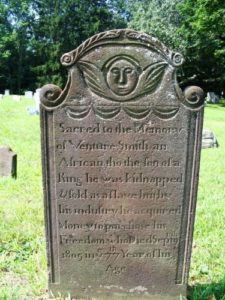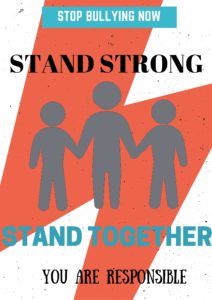http://www.youtube.com/watch?v=litXW91UauE
I will be the first to admit that I cried while watching the “Real Beauty” commercial by Dove (Source 1). I got all teary and sniffly, and felt happy. Or maybe hopeful is the correct term. Then I read this blog (Source 2), and had to stop and reexamine this hopeful feeling. The truth is, I initially felt hopeful because it made me believe I am not as hideous as I think I am. It was telling me that I had more value than I thought I did. However, upon closer inspection, we see this “Real Beauty” video is merely enforcing a dominant ideology that defines a woman’s worth solely by her looks. Dove even enforces the typical current standards of beauty. Descriptors such as “thin, young, and blue-eyed” were considered beautiful, while “fat, old, or crows feet” were shown in a negative light. The featured women were all white, and ranged only from young to middle age, which is, in itself, a misrepresentation. The people of color that were shown in the video all had lighter skin, playing into the “lighter is better” theme that we see in Toni Morrison’s The Bluest Eye. This notion reinforces the young Caucasian standard of beauty that this country has been supporting since its founding. Additionally, the blogger points out, “Out of 6:36 minutes of footage, people of color are onscreen for less than 10 seconds.” (Little Drops). That is a startlingly low percentage. Not only does it emphasize race issues associated with beauty but also draws attention to the problems with society in general. It looks as if the editors thought to themselves “Well, we threw some black people and an Asian in there, so it won’t be racist.” Don’t get me wrong, I agree with the blogger’s message; women are to too harsh with themselves, but clearly there is still a value system in play that determines how beautiful women are, thus what their worth is.
The Bluest Eye provides page after page of examples of society’s definition of beauty and how it affects black women. Morrison often describes the differences of beauty within in one race to draw attention to larger issues in our culture. These descriptions reveal to the reader the system of oppression embedded in a culture that judges and awards value based on the degree of whiteness an individual possesses. The introduction of Maureen Peal is a perfect example. When Claudia and Frieda recognize the amount of attention Maureen Peal receives, merely because she has a lighter complexion and a high socioeconomic status, they cannot associate with her, believing they are not like her. “Meringue Pie” does not even seem to be of the same background because she is so much better: “A high-yellow dream child…she was rich, at least by our standards, as rich as the richest of white girls” (Morrison, 62). Her light complexion helped her to cast a spell on the entire school, white and black students and teachers alike (61). This is an example of how Frieda and Claudia, as well as all young women, learn to associate skin color with value; they use Maureen’s apparent beauty through her light-skin to prove to themselves they are not beautiful because they have a darker complexion. Initially, Claudia alludes Maureen has no interest in them, so I was shocked when Maureen, even for a minute, associates with them on their partial walk home. When Maureen turned on them and made it clear what she really thinks about the darker-skinned girls, my shock subsided. “I am cute! And you ugly! Black and ugly black e mos. I am cute!” (73). Though I’m still not completely sure what “black e mos” means, I know it has something to do with Frieda, Pecola and Claudia’s darker skin tone. It may also have to do with the relationship between beauty and class, which is interesting and troubling because it is at such a young age they are realizing these furtive systems of oppression. Further, the idea that a person of color is using the “blackness” they too possess to insult another person of color shines a light on the unsettling reality of the racial-self loathing, as Morrison calls it, the young women are learning during childhood (210).
Beyond interactions with peers, these vulnerable young women are faced with many images that insist on what is beautiful, adored and desired. Like the deeply rooted oppression caused by white hegemony in our culture, exemplified through Maureen Peal instance above, images such as Shirley Temple were sent through the media to perpetuate this white order. “Adults, older girls, shops, magazines, newspapers, window signs–all the world agreed that blue-eyed, yellow haired, pink-skinned” was beautiful and normal (20). This constant bombardment with images of whiteness is especially harmful to young women of color because our society’s ideas of normal or beautiful do not match what these girls see in the mirror, and serve as constant reminders that they will never measure up, never be white enough to be beautiful. Additionally, how does a child learn to accept who they are and strive for greatness when they are not given decent role models?
Shirley Temple complements the messages sent to young people by the “Dick and Jane” passages at the beginning of each chapter. They remind us that part of learning to read, part of learning language, includes learning value assignments and social norms. It is a process of socialization and domestication. These Dick and Jane beginner books that are referenced and sprinkled throughout the novel are cultural markers or indexes that show what the youngest, most malleable minds of our society are being taught. These books were all that was available to Americans in the Forties. From birth, people naturally begin to look for their place in a culture. When they do not see themselves represented in the media, in books, movies, magazine, etc., they face what the documentary Missrepresentation referrers to as “symbolic annihilation.” When a child of color reads these books or is repeatedly given a white baby doll or is asked to adore Shirley Temple (our culture’s living definition of “cu-ute”), they receive the message that they are not only ugly in comparison to whites, but there is no place for them in this society (Morrison, 19). This American narrative does not include them. Further, these examples remind us of how we can only pursue options we are given and only speak the specific language we learn. If the language is that of the ruling class, the marginalized groups are forever doomed to use the language of their oppressors, and therefore, only pursue the options they are presented with. “Black,” unfortunately, is not a word the oppressor associates with beauty.
Works Cited
Source 1: http://www.youtube.com/watch?v=litXW91UauE
Source 2: “Why Dove’s “Real Beauty Sketches” Video Makes me Uncomfortable…and Kind of Makes Me Angry” http://jazzylittledrops.tumblr.com/post/48118645174/why-doves-real-beauty-sketches-video-makes-me
Source 3: Toni Morrison, The Bluest Eye
Source 4: Missrepresentation documentary
Students in Intro to Women’s Studies)


Recent Comments